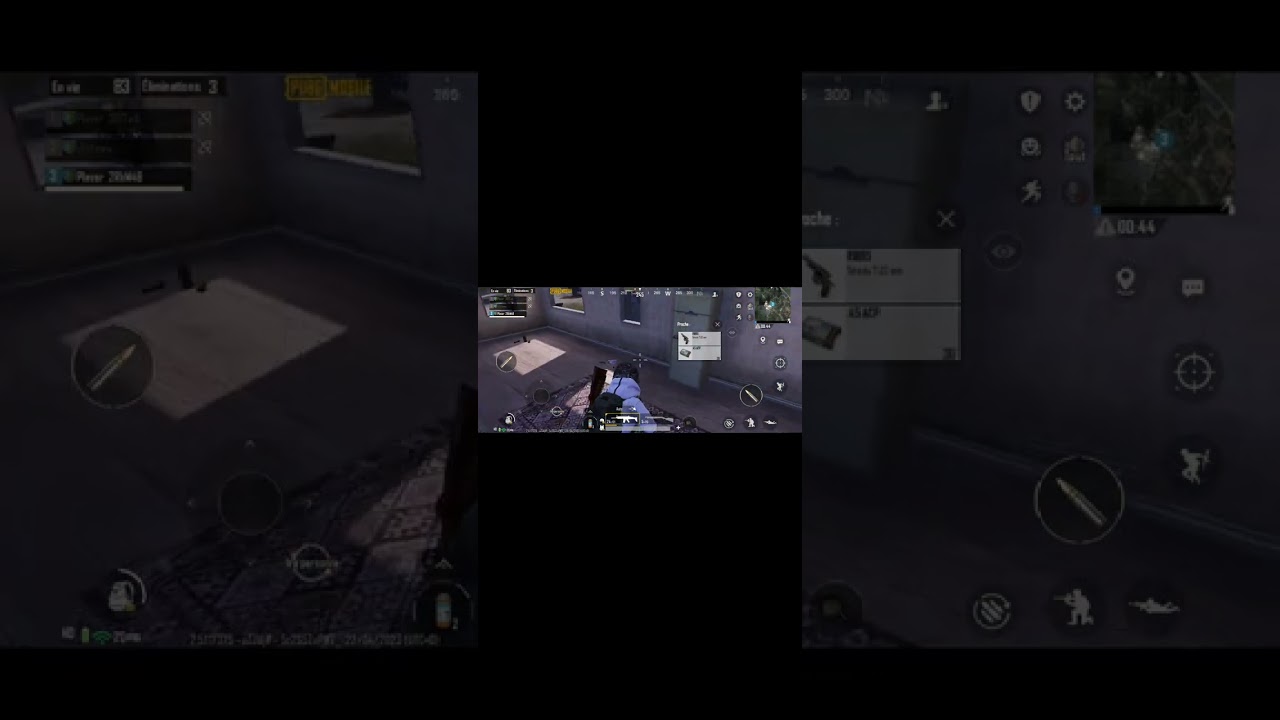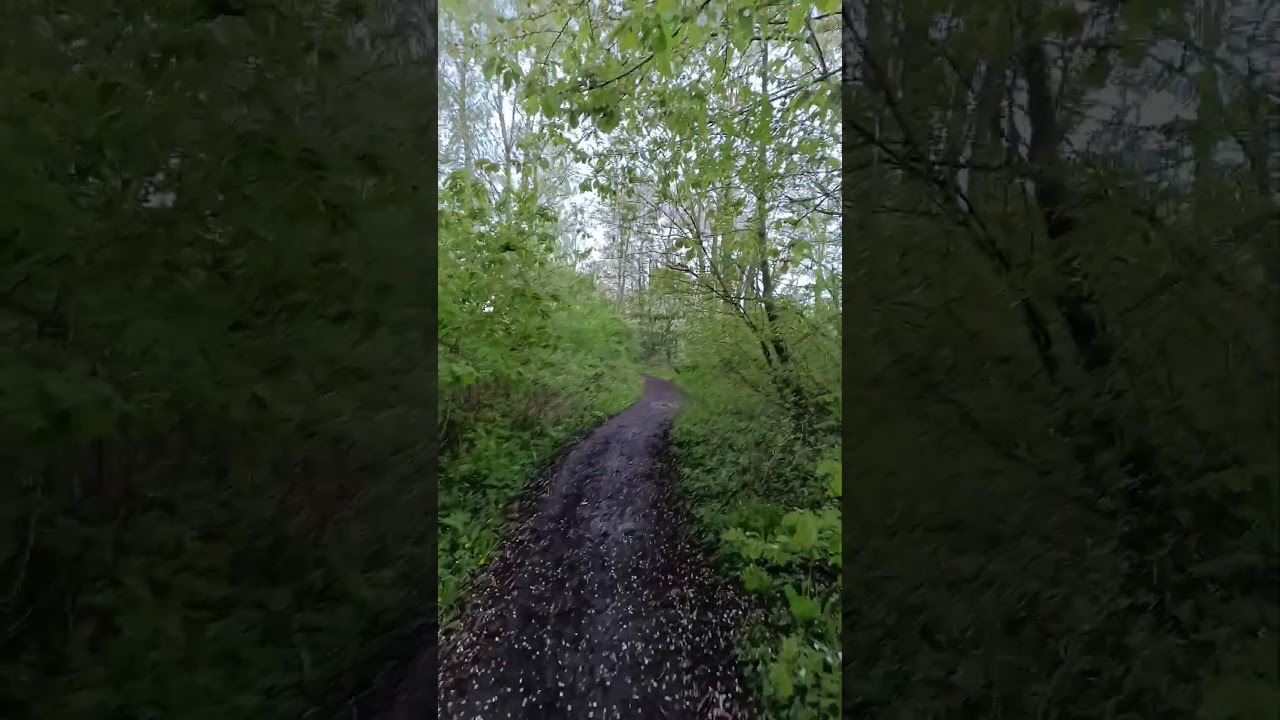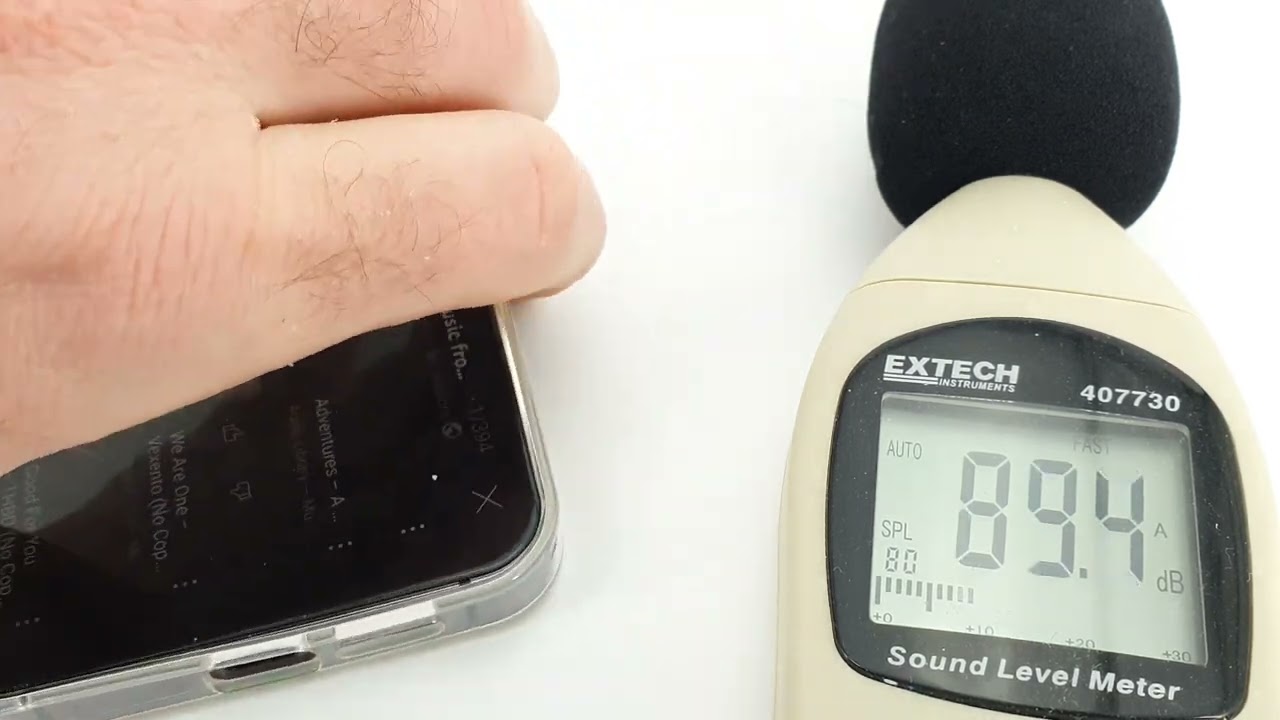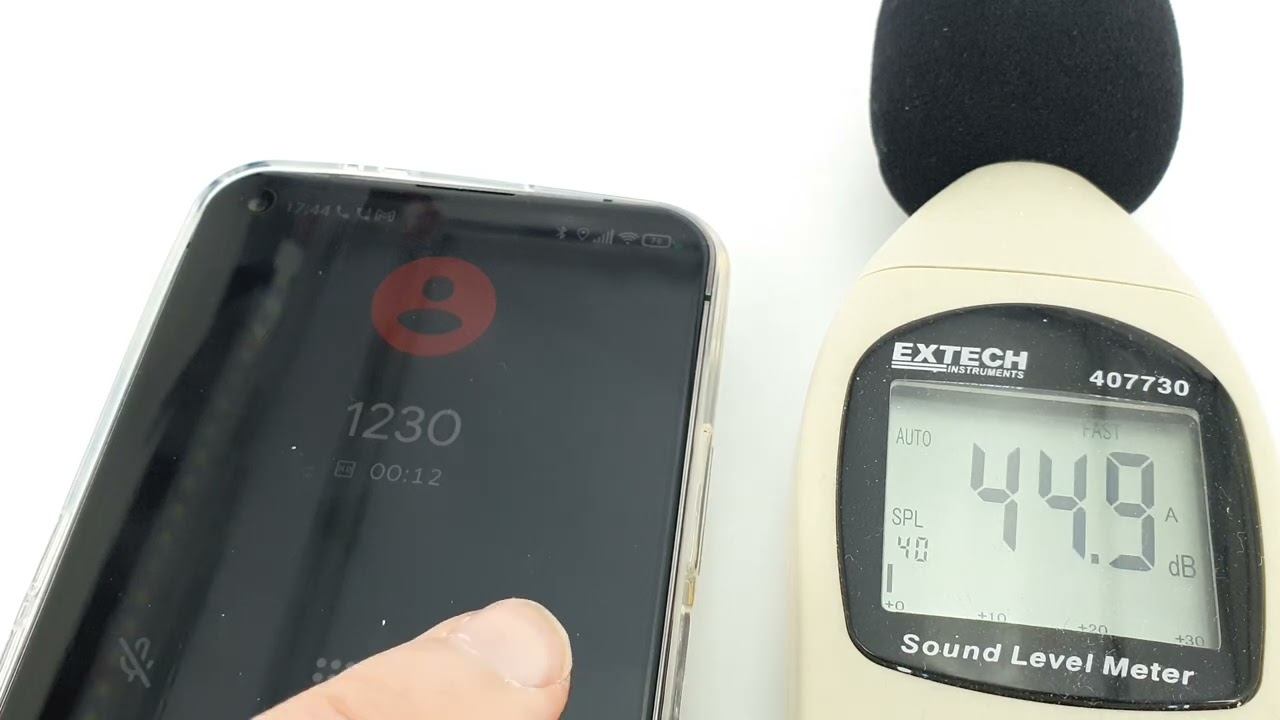Smartphones
Unihertz Luna : test / review
Published on: 21-04-2023 / Modified: 01-10-2023
I've been testing phones for about 5 years and like everyone else, I've tested phones from well-known brands but fortunately I didn't limit myself to that. I bet you never heard of brands like Umidigi, Oukitel, Doogee, Ulefone or Meizu. Yet they are sometimes really worthwhile phones and they often produce phones that the big brands don't dare to market.
I was contacted in early 2023 by Unihertz to test the Unihertz Tank, I had never heard of them before. When a brand contacts me this way, it's usually a good sign, it means they have enough confidence in their product. When I test a phone, I don't hesitate to say if it's bad and it impacts negatively the sales, so there is always a risk for them.
So I tested the Unihertz Tank and I was positively surprised, this phone was really unique in its kind. I think I'm the only one who tested it in detail.
After this first positive experience, I will test a second model with this Unihertz Luna. This model is nothing like the other model I tested, will it also receive a good score? That's what we'll see!
Introductory offer
The Unihertz Luna is available on the official website for $299: Unihertz Luna
There is a discount if you sign up for their newsletter.
Manufacturer web site:
https://www.unihertz.com
Site where I have bought the Unihertz Luna:
https://bit.ly/3nWa5...
Structure of my tests
I test the phones according to a pre-established structure (see below) to provide you with as much information as possible. Unfortunately, this takes a long time. Some tests like network performance tests take several days and for photo tests I sometimes have to wait until the weather is suitable to take pictures in good conditions. I am therefore obliged to publish the tests step by step, so I invite you to come back if the test is not complete at the time of your visit.Price Unihertz Luna
The list below shows the prices for the Unihertz Luna from more than 50 sites around the world. If you are not satisfied with any price, you can subscribe to a price alert to be the first to be notified when the price drops.The above links are affiliate links from companies such as Amazon, Gearbest, Aliexpress,... If you appreciate my work, I would be grateful if you could purchase these products through these links. It costs you absolutely nothing but I get a small commission that allows me to buy the material I test. Thank you very much!
Timeline
April 20, 2023: reception of the Unihertz Luna, the test can beginWhy this phone?
it's a phone that's too rough and too massive to appeal to a wide audience. For me, it doesn't make a difference, I don't only test trendy phones and when I make a nice discovery it's even better.The Unihertz Luna is a mainstream phone but like the other model, this phone stands out in a number of ways. Its format is not very conventional, its weight either and its led lighting system inspired by Nothingphone will probably accentuate this difference.
The Unihertz Luna does not innovate on its components because they are found in other phones, it is its format and external appearance that will make the difference.
Unpacking
I'm not very sensitive to fashion effects, but like everyone else I have a subjective first impression when I receive a new phone. Among the many phones I have tested, few stand out in terms of packaging because all the boxes end up looking the same.
The Luna has a point with the packaging. The box is gray with metallic highlights a bit like a hologram and this choice of texture gives it a pretty good premium effect. This impression doesn't evaporate when you open the box as the contents follow the same guiding line.
The box contains the phone which is already wrapped in a transparent soft silicone protection, this is also what Xiaomi does but they separate the protection from the phone. This protection seems to be of good quality and shows off the phone quite well. In the box we also find a charger, a usb cable, a manual and an additional screen protector as the screen is already protected by a plastic film.
First configuration
The Unihertz Luna runs on a pure version of Android 12, which means that Unihertz has not modified the operating system and has not added lots of unwanted applications. There is however a small overlay for the management of the leds on the back of the phone but that's it.The configuration of the phone therefore follows the same screens as other phones under Android 12, there is just for the lock where it only offers unlocking by facial recognition. The fingerprint sensor must be configured separately.
Finish
The Unihertz Luna is a fairly massive phone, it weighs almost 300 grams and measures 168 mm by 76.8 mm, it is also quite thick with its 104 mm. This phone takes a style specific to Apple with rounded corners and straight edges, it is also inspired by the NothingPhone for the LED effects.
My first subjective impression is positive because despite the massive side, I think it is a beautiful phone. It has an exterior that is quite different from what I am used to test. It's a bit like a rugged phone that has been prepared for a beauty contest.
Its massive side allows it to carry a large 6.81 inch screen, it's probably the same screen as the Unihertz Tank but the Luna isn't covered by that thick plastic protection that tended to distort colors on the Tank. I still have to test the colorimetry of the screen to check this point.
On the right side, we find the usual start button and the two buttons to adjust the volume. These buttons are in the usual place but with the protective shell, these buttons are a bit hidden. The edge of the phone seems to be made of a metallic material giving an impression of solidity, we are here also far from the rough aspect of the Tank, the Luna is much more elegant.
On the left side there are two buttons that can be customized from the phone's settings, it's quite rare to find this kind of buttons on a consumer phone.
Underneath we find the usual USB type C port, a SIM drawer (small size, sim card in front/back mode) and an output for the sound. The silicone protection covers the SIM drawer but a priori you do not have to change your SIM card every day, so it should not bother you. There is also a sound sensor, I am curious to see if the silicone protection will not play a role in its effectiveness.
On top we find an audio output, a sound sensor and what seems to be an infrared port.
The back is probably the most striking element of this phone because contrary to the general tendency to produce phones with a uniform background or mirror effect, Unihertz played the card of the originality. The back of the phone is covered by several LEDs that can light up depending on several triggers. They can light up when you receive a call, a notification or when you listen to music. The behavior of the leds is directly configurable from the home screen.
Speaking of leds, I almost forgot to mention the photo block. Its design also reminds me of what other brands have done before. Even if the sensors are not all the same size in reality, here we have 3 circles of the same size to create a balanced whole at the level of the photo block. If you do not use the silicone protection, these sensors will create a small imbalance when the phone is placed on its back.
This Unihertz Luna will not leave you indifferent, you will love or you will hate but unlike the majority of phones it has a strong visual identity.
Specifications
The information below comes from the Device Info HW application. The application provides detailed technical information about the tested phone. The Unihertz Luna uses the same Mediatek architecture as the Unihertz Tank. The model I tested has 8 Gb of RAM and 256 Gb of storage memory.
The 6.81-inch screen has a resolution of 2400 x 1080 and a frequency of 60Hz.
The phone uses UFS 2.2 which gives it a fairly comfortable memory transfer speed. It is Bluetooth 5 and Wifi 6 compatible, its GPS is the same as the Unihertz Tank.
I did not notice anything special in the rest of the technical specifications.
CPU / GPU Performance
The Unihertz Luna uses a Mediatek Helio G99 CPU, a mid-range CPU that can also be found in the Unihertz Tank or the Poco M5. This CPU offers good performance that should suit a very wide audience.
For the graphics part, the Luna relies on a Mali G57 GPU that offers good enough performance to play any game with sometimes a decrease in the level of detail for the most demanding games.
The phones running on this architecture use the same components for wifi, 4G, Bluetooth and GPS.
Benchmark Antutu/3DMark
I got a score of 312272 points with Antutu v8, this ranks this phone between the Redmi Note 12 and the Redmi Note 12 Pro. It outperforms the Poco M5 quite a bit, despite using the same hardware. The memory performance is quite remarkable as it outperforms most mid-range phones to approach the performance of a Redmi 11T. This performance is especially useful for using in-memory applications and switching between them.Gaming
To test the performance in game, I download the mobile PUBG game and evaluate the in-game experience, graphics level and depth of vision. This game is quite demanding and should help you evaluating the performance of a phone.

The Unihertz Luna is not a gamer phone but it can run PUBG Mobile in HD without any problem. The game is perfectly playable, the textures load quickly and I didn't notice any slowdowns. This phone has only one speaker and it is located where you usually place your hand to play, which tends to mask the sound a bit.
You can see all this for yourself on the video in this section. I had a small problem when recording, the video was recorded in a size smaller than the screen.
Network performance
This smartphone offers a wide frequency coverage in 4G (21 frequencies) that should allow you to use it just about anywhere in Europe, even the B28a and B28b frequencies are covered.Signal 4G (from December 2020)
I decided to change the methodology for measuring the network because I noticed that the configuration of the mobile network changes over time. This makes it more difficult to compare phones because the conditions are no longer exactly the same.
To overcome this problem, I set up a device that captures 24 hours a day about ten parameters from the mobile network (ex: cell id, rssi, rsrq, snr, frequency,...). I then place the phone next to the device for 24 to 48 hours taking the same measurements so that I can compare them.
Overview of the phones tested with this methodology
I made 1133 measurements to evaluate the 4G network sensitivity of this phone and got an average signal of -91.94 dBm with this phone and -91.7 dBm with the probe. This is very close to the probe result which indicates that this phone has good network sensitivity. The signal also remained more stable than the probe.
I had obtained very similar results with the Unihertz Tank which uses the same hardware, this shows once again that this test produces reliable results.
Download/Upload speed
To test the download speed, I have identified some 4G cells offering good performance where I test all my devices several times to see what download and upload speed they can achieve.
Wifi performance
To test a phone's ability to receive the network properly, I take measurements near my router and then remotely (and always at the same place). This gives me an average in dBm where a value of -90 dBm indicates poorer performance than a value at -30 dBm.Wifi signal
I measured an average signal of -19 dBm near the router and -63 dBm at a distance, these are average values, the Unihertz Luna is neither excellent nor bad. I got similar results with the Unihertz Tank which uses the same components.
Download/Upload speed
To test the speed in Wifi, I connect to my router in 2.4Ghz and 5Ghz (if available) and use the Ookla application to measure the speed.
GPS performance
To test the accuracy of the GPS signal, I use two positioning applications to evaluate the difference between the actual position and the position indicated by the phone. This test is done outdoors with nothing to obstruct the signal. An accuracy level of up to 3 meters can easily be corrected by an application (e.g. Google Maps).
I got a GPS accuracy level of 1 meter with this phone with about 30 satellites available, which is often the case with Mediatek GPS chips. I then checked the frequencies used and I saw only one frequency per network. I also checked my position against reality and I was indeed about 1 meter from the position indicated on the map. So this phone has a good level of GPS accuracy.
Battery range
To test battery life I developed an application that measures the battery level minute by minute until the battery is empty. This application consumes about ten percent of the phone's resources and I do a test with 100 brightness. This test aims to reproduce a contemplative use of a phone (e.g. surfing the internet, reading articles, spending time on social networks). These results are not valid for intensive gaming/streaming use. Not yet available / testedPhoto camera test
To test the quality of photos produced by a phone, I do a technical test (resolution, sharpness, chromatic aberration,...) in studio (identical conditions) to evaluate the technical part objectively. From the second half of 2020, I built my own laboratory to take completely objective technical measurements. I then take pictures in real conditions to see how the camera performs. I then evaluate these photos according to my criteria but I publish the photos so that you can evaluate the result according to your criteria.Hardware
The Unihertz Luna smartphone is equipped with 3 sensors:Samsung S5KHM2 (108 million pixels)
I tested this sensor in a dozen phones, it is a mid-range sensor that can deliver good results when the light conditions are good but it is a sensor that has already existed for a few years, there are now better alternatives in this price range.
Infrared sensor (20 million pixels)
The infrared sensor allows you to take pictures in total darkness and usually has a range of about ten meters. The purpose of this kind of sensor is not to take beautiful pictures but you can take pictures in conditions impossible for a normal sensor.
Macro sensor (2 million pixels)
This type of sensor has a rather anecdotal use, I do not test it because the interest for this kind of sensor is very limited.
Photo quality
Photo quality (indoor/studio)
The studio test is carried out under the same conditions so that the results can be compared on an equal basis. I calibrate my lighting for each test to obtain the same brightness and colour temperature. This test is a preliminary analysis of the technical qualities of a camera. Most phones fail this test, so you should also read the results of the other tests in the following paragraphs.
Main Sensor: Samsung S5KHM2 (108 megapixels)
Samsung's 108 megapixel sensor is capable of delivering very detailed photos if you use the 108 megapixel mode (which is not enabled by default). The phone is powerful enough to be able to take this type of photo without delay but on the other hand these photos will obviously take up a lot more space in your storage memory. You can also activate the raw mode which allows you to output DNG files for editing with Photoshop. The photos in studio are always a little underexposed but I find that this Samsung is doing quite well, the photo is not too dark. The level of detail is good, the bricks below the Statue of Liberty are very well detailed and the Google lettering on the cube is also very sharp. The colorimetry is a bit cold but this is also related to the type of lighting, the result will be different for outdoor photos.
I took a DNG file to see if the additional information captured by this camera would allow me to improve the photo:
The result is quite good, the white is much closer to reality, the colors are also better saturated and the contrast is more marked. The original photo seems veiled in comparison with this one. If you know how to handle a DNG file, you will be able to significantly improve the quality of the photos.
Infrared sensor
You should rather see this sensor as a tool because it is not with him that you will make beautiful selfies at night. The phone is equipped with an infrared light on the back that allows you to illuminate an area of about 10 meters and this will have the effect that you can photograph everything in this area but not beyond. The level of detail is not very high, but the photo is of sufficient quality to find your way in the dark
Photo: technical test
I was inspired by industrial technical tests to create my own technical test to evaluate the technical quality of a camera. This test is an objective assessment of a camera's ability to render a scene correctly.
I test the following elements:
- centre sharpness, peripheral sharpness
- colour fidelity based on 24 reference colours
- level of chromatic aberration
- dynamic range (ability to capture dark and light areas without loss)
- distortion
The technical evaluation may differ from the subjective evaluation as the feeling of a photo will be influenced by the processing provided by each manufacturer.
Main Sensor: Samsung S5KHM2 (108 megapixels)
Samsung's 108 megapixel sensor is capable of delivering very detailed photos if you use the 108 megapixel mode (which is not enabled by default). The phone is powerful enough to be able to take this type of photo without delay but on the other hand these photos will obviously take up a lot more space in your storage memory. You can also activate the raw mode which allows you to output DNG files for editing with Photoshop. The photos in studio are always a little underexposed but I find that this Samsung is doing quite well, the photo is not too dark. The level of detail is good, the bricks below the Statue of Liberty are very well detailed and the Google lettering on the cube is also very sharp. The colorimetry is a bit cold but this is also related to the type of lighting, the result will be different for outdoor photos.
I took a DNG file to see if the additional information captured by this camera would allow me to improve the photo:
The result is quite good, the white is much closer to reality, the colors are also better saturated and the contrast is more marked. The original photo seems veiled in comparison with this one. If you know how to handle a DNG file, you will be able to significantly improve the quality of the photos.
Infrared sensor
You should rather see this sensor as a tool because it is not with him that you will make beautiful selfies at night. The phone is equipped with an infrared light on the back that allows you to illuminate an area of about 10 meters and this will have the effect that you can photograph everything in this area but not beyond. The level of detail is not very high, but the photo is of sufficient quality to find your way in the dark
Outdoor photo quality
Samsung S5KHM2 (108 megapixels)
This Samsung camera is an old acquaintance as I have already tested it more than a dozen times in other phones and especially in the Unihertz Tank. The result is more or less the same in all the tested phones, this camera is able to produce pictures quite rich in details, the pictures are generally underexposed as soon as the light is not optimal and the colorimetry is rather cold. I find these characteristics in the test of this sensor on the Unihertz Luna, so there are no surprises. This sensor has existed for several years, there are alternatives offering better photo quality but this does not mean that the good old Samsung 108 million pixels is to be classified as obsolete sensors. It still produces good photos and Unihertz allows you to take photos in DNG with the automatic mode which will allow you to improve all your photos without too much effort. This will of course be at the cost of the space occupied.
To illustrate what can be done with a DNG file, I took the same photo as the one at the beginning of this paragraph and I modified some parameters.
With a little more time, it is undoubtedly possible to do better but I wanted to illustrate to what extent it is possible to recover details from the same photo. In the original photo, the photo is darker and you can see less vegetation. However, the information is there, you just have to go and look for it.
Here are some photos taken in automatic mode (without modification):
Test photo / night
The night pictures taken with the Samsung camera are much too dark while this sensor can in principle do better but if I got better results with other phones it's mainly thanks to the night mode which sometimes works miracles by combining several pictures in one. This phone also has a night mode but it is less effective. You can improve the result by using the photo application from Google (Gcam) that you will have to install via an APK.
I also tested the infrared sensor in the same conditions, these are the black and white photos in the list of photos below. This sensor should be seen as a tool because it is not designed to make pretty pictures, it is mainly designed to be able to take pictures in almost total darkness. The infrared projector on the back of the phone allows you to light an area of about ten meters where you can still easily distinguish everything that is near you. Beyond this limit, it becomes more complicated if there is no other source of light
Video quality
Stabilisation

Unihertz has unlocked access to video capture in 1440p, which is not always the case with this Samsung photo sensor. So it's a good thing except that with this resolution, the phone is not able to stabilize the video effectively and so we see the image go a little in all directions with each vibration.
Video normale conditions

Even if the video is still a little too dark, it is brighter than the photos taken under equivalent conditions. The image processing is quite fast, the exposure jumps are hardly visible and the sharpness of the video is quite good. I can see that the outline of the leaves is sometimes a bit forced but you really have to pay attention to it to notice it. The sharpness processing is probably a little too aggressive. This phone can produce video at 1440p and 30 frames per second, that's better than a lot of the Xiaomi's using this camera as those are limited to 1080p.
Video low light

It was obvious in the photo part of this test but this phone is not very comfortable for night videos. The videos are much too dark and difficult to use for example to film a concert or a scene with big differences in brightness.
External audio quality
This test is intended to give you an overview of the volume and sound quality during calls and when listening to music through the external speakers.
Audio quality / external speaker

The Unihertz Luna has only one speaker for music but it produces a fairly balanced sound, the highs are not exaggerated as is often the case and I do not have a sense of clutter when several sounds are played at once. The sound is relatively powerful for a phone with a single speaker. Using the external speaker will also trigger the LEDs on the back of the phone to light up to accompany the music.
Audio quality/calls

This phone offers good sound quality for calls, the sounds are well balanced, the sound is not too high pitched and the voices are clear. If I switch the sound to the speaker, the sound quality is obviously not as good but the voice is still perfectly understandable and the volume is higher than average.
Audio quality (headphones)
To test the quality of the phone's audio output, I connect the device's audio output to a measuring tool, then play sounds on all frequencies and measure the differences between the original sound and the sound produced by the phone. In this way I measure the phone's ability to correctly reproduce all sounds.Audio quality by headphones
I tested the sound quality by playing all the frequencies from the low sounds to the highest ones and then compared the result with the source file to measure the gaps with the phone. The Unihertz Luna is able to reproduce most of the frequencies correctly, it is a bit more comfortable in the low tones but the gap in the high tones is not very important. The sound is powerful but still in the average of the phones I tested.
The sound of the Unihertz Tank has exactly the same characteristics and it is normal, it is the same sound chip.
Screen quality
To test the screen, I use a colorimetric probe that measures the color accuracy of a screen, as well as other parameters to see if a screen is able to correctly reproduce an image. I also test the brightness level to determine if the screen will be able to display an image in full sunlight.Colorimetry
The screen of this phone is an IPS LCD screen, I had quite bad results with this screen on the Unihertz Tank because it uses a thick plastic protection that distorts the colors. Without this protection, I get better results on the Unihertz Luna but I am still far from the level of colorimetry that can be obtained in this price range.
I got a dE of 5.83 with a white temperature that is set at 7785K, so the image is too cold. I did not find any possibility to change the color temperature in the phone settings.
Brightness / Contrast
I measured a brightness of 495 cd/m² and I couldn't get any better brightness by flooding the screen with light. With this level of brightness, you can use the phone just about anywhere but in direct sunlight you may lose readability.
Contrast
I measured a contrast ratio of 1701:1, this is a good contrast ratio for a screen of this type but it is far below what an amoled screen can offer. In this price range, we find more and more amoled screens, so it's a bit of a pity
I obtained a range of 2.31 with a visible deviation on some types of gray.
Biometry
Not yet available / testedOperating system
Not yet available / tested
Encoutered bugs
Not yet available / testedAccessories Unihertz Luna
Compare Unihertz Luna with the others
Test / Review conclusion
Not yet available / tested
Strengths
Not yet available / tested
Weaknesses
Not yet available / tested
Alternatives to this product
Not yet available / tested
 LAURENT WILLEN
LAURENT WILLENHead of myself on this blog
I share my passions on my blog in my free time since 2006, I prefer that to watching nonsense on TV or on social networks. I work alone, I am undoubtedly one of the last survivors of the world of blogs and personal sites.
My speciality? Digital in all its forms. I have spent the last 25 years working for multinationals where I managed digital teams and generated revenues of over €500 million per year. I have expertise in telecoms, media, aviation, travel and tourism.











































Questions/Comments